Big & Small Trees Loop
Caution! We do not provide turn-by-turn directions in our GPX files. Those are auto-generated by your bike computer and are usually less than 70% accurate. Learn more.
For help loading a GPX file onto your bike computer, go here.
DownloadHighlights & Remarkable Spots
Port Renfrew / Beginning and End of Ride

The town of Port Renfrew, native land of the Pachedaaht First Nations, was once a thriving logging community. When conservation efforts began focusing attention on the incredible old-growth forests in the area, the town’s focus shifted from logging to ecotourism. Port Renfrew has attracted an increasing number of tourists who wish to see the largest and oldest trees in what is now known as the “Tall Tree Capital of Canada.” With all the changes, the community has realized that revenue from tourism surpasses that from logging. [Ancient Forest Alliance]
Red Creek Fir / ~ Mile 16.5
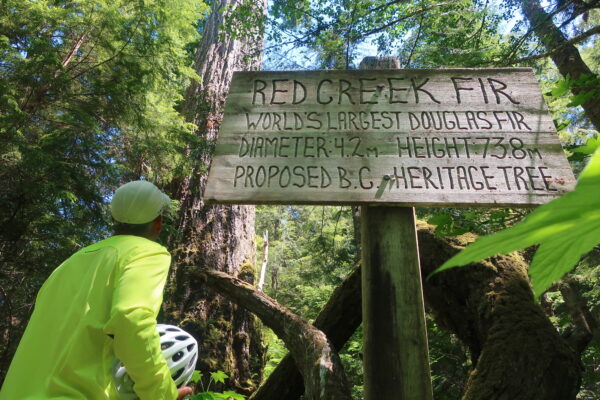
The Red Creek Fir is the world’s largest Douglas fir by volume. It is located in the shaded, southern slopes of the San Juan Valley, just a few valleys east of Big Lonely Doug. The Red Creek Fir stands more than 242 feet tall (73.8 meters). It has a circumference of more than 32 feet (9.8 meters) and measures nearly 14 feet (4.2 meters) in diameter. The tree was seeded approximately 1000 years ago. [Wikipedia]
San Juan Spruce / ~ Mile 23.0
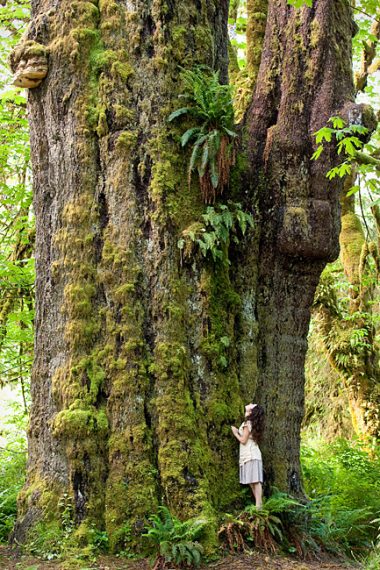
Until 2016, the San Juan Spruce was the world’s second largest Sitka by volume, surpassed only by the Queets Spruce in Washington. In 2016, the tree lost significant height and mass due to a lightning storm. Though it is no longer considered to be among the world’s largest San Juan Spruces, its diameter is still significant. [Wikipedia]
Photo Credit: TJ Watt
Renfrew Creek / ~ Mile 28.5
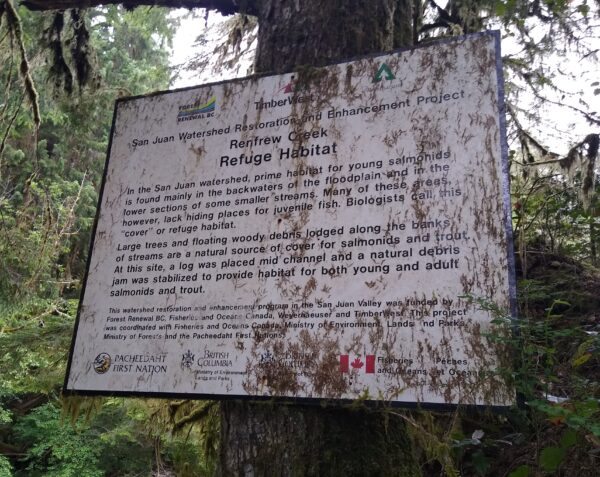
“San Juan Watershed Restoration and Enhancement Project – In the San Juan watershed, prime habitat for young salmonids is found mainly in the backwaters of the floodplain and in the lower sections of some smaller streams. Many of these areas, however, lack hiding places for juvenile fish. Biologists call this ‘cover’ or refuge habitat. Large trees and floating woody debris lodged along the bands of streams are a natural source of cover for salmonids and trout. At this site, a log was placed mid channel and a natural debris jam was stabilized to provide habitat for both young and adult salmonids and trout.” [As posted on a difficult-to-see sign on the north side of the creek]
Four-Mile Creek Hatchery / ~ Mile 30.5
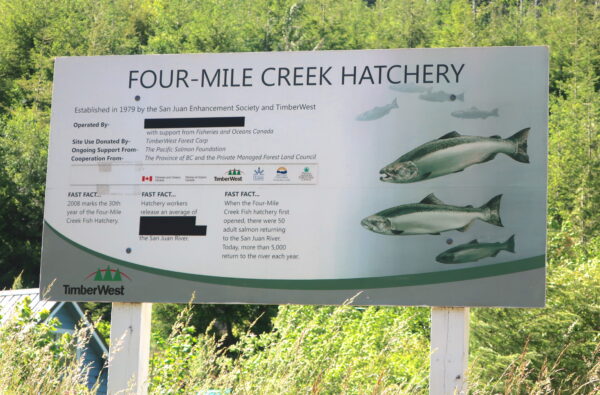
The Four-Mile Creek Hatchery, which is located four miles upstream from the San Juan Estuary, was initiated in 1980 to enhance chum stocks. When the hatchery first opened, there were 50 adult salmon returning to the San Juan River. Nowadays, more than 5,000 salmon return to the river each year. “Current project objectives are to: restore chinook populations in the San Juan River, maintain a healthy coho population in San Juan River, implement a chinook stock assessment program, promote education and awareness around importance of salmon stocks to community, maintain fish passage into San Juan River, and provide local volunteer and school groups an opportunity to participate in hands on fisheries projects.” [Fisheries and Oceans Canada]
Tiny Fairy Tree / ~ Mile 31.5
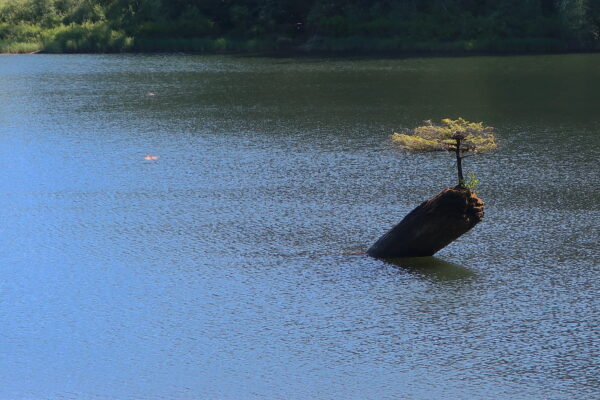
This “bonsai” tree on Fairy Lake is small but mighty. While this Douglas Fir doesn’t hold any records for its height, its claim to fame is that it is the most photographed tree in all of Canada. The tree clings for dear life to a partially submerged log, which is also a Douglas Fir. [Atlas Obscura]
Gordon River Estuary / ~ Mile 34.0
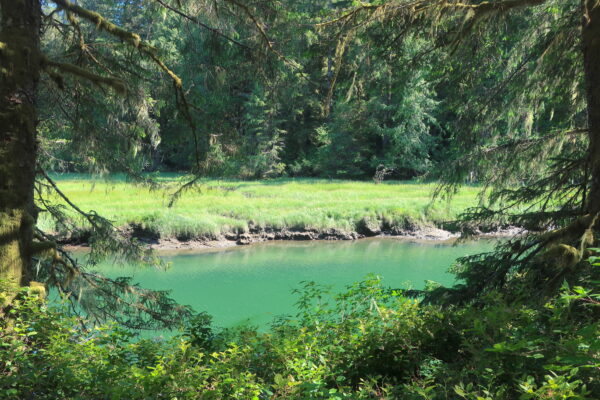
Two projects to improve the habitat of the T1′ oqwxwat’ Estuary (Gordon River Estuary) were completed by the Pacheedaht First Nation in 2020 with funding from the Government of Canada’s Coastal Restoration Fund. The first project involved removing a dike and restoring the pond behind the dike to salt marsh habitat. This project doubles the amount of salt marsh rearing habitat for salmon. The second project involved excavating breaches to reconnect historic tide channels between the existing salt marsh and Brown’s Slough. This project provides fry from the Gordon River with access to rearing habitat in the slough as well as the salt marsh. [Signs posted around Port Renfrew and Fisheries and Oceans Canada]
San Juan River / ~ Mile 35.5

The San Juan River supports six species of salmon: Chinook, Chum, Coho, Pink, Sockeye, and Steelhead. These salmon provide food for the Pacheedaht First Nation as well as catches for recreational fishermen. The area has undergone a four-year stabilization project to add a gravel bar of nearly 120,000 square meters. This bar has been planted with young conifer and willow stakes. As these plantings grow into shrubs, they will stabilize the gravel bar, allowing for the ecology to recover and a forest to grow. The gravel bars, in turn, will capture and stabilize bedload material that will create deep pool habitats allowing for juvenile and adult salmon to thrive. [Signs posted around Port Renfrew and Fisheries and Oceans Canada]
When We Like to Ride This
Though the route is rideable year-round, the winter months are cold and wet, and you may run into snow at higher elevations. The riding is best June through September when the temps are warmer and the skies are drier.
Terrain & Riding
This route begins on the paved Juan de Fuca Highway (Hwy 14). Though the road does not have heavy traffic, you will certainly encounter automobiles and possible logging traffic, too. The road is narrow and winding with no shoulder.
Two miles into the ride, turn left onto Red Creek Main to begin the gravel portion of the ride along the San Juan River Estuary Geological Reserve. This route has a variety of gravel surfaces. You’ll see everything from solid gravel to smooth-as-butter hardpack to sections of chunky rocks. Keep your eyes out for potholes, especially those obscured by the shade.
Shortly after veering left onto Red Creek Main from Mosquito Main at Mile 13.0, you will begin descending towards the Red Creek Fir. The road gets rougher the further you descend. Like, really rough. Wide tires and/or suspension will be your friend on this section.
Allow at least 25 minutes to explore the area around the Red Creek Fir.
The path to the San Juan Spruce is easily missed. The path, which is behind a wall of gravel, is immediately across from the yellow “Main 2 km Down” sign. You will see the San Juan Spruce right away. We encourage you to walk to the end of the path, where you will see other large trees. En route, you will see a fun swing, camp spots, and a path leading down to the San Juan River where you can take a refreshing dip. Allow at least 15 minutes to explore the area around the San Juan Spruce.
At the end of Lens Main, rejoin the paved Pacific Marine Road for a smooth and easy 10-mile pedal back to Port Renfrew.
The Start
The route begins at the Pacheedaht Gas Bar in Port Renfrew. There is a gas station here, as well as a small convenience store. The Visitors Center, which offers information and WiFi, is located in the back left corner of the property. Ask for permission to park here. You may or may not be granted permission.
If you are staying overnight in Port Renfrew, it would be best to park at your lodge or campground and cycle to the Pacheedaht Gas Bar to begin the route.
Day-use parking is available for $15/day at the Pacheedaht Campground. The campground has two day-use lots – one at the entrance to the campground at the northwest corner of the San Juan Bridge and the other just across from the West Coast Trail Registration office. Pay for the parking at the Pacheedaht Campground Office (305 Pachidah Rd in Port Renfrew). Be aware that the office is not staffed full-time, so you may need to wait an hour or so for staff to appear.
Food & Water
- Start & End / Community of Port Renfrew
Route Notes
The climate in southwest Vancouver Island is temperate. Temps can be warm or cold and the skies can be dry or wet…all in the course of a single day! Be sure to pack appropriate layers and raingear. Wear visible colors, especially since you are riding a route with logging traffic.
The light on the route can vary from sunny to shady and all hues of filigreed light in-between. Wear bright colors and consider using bike lights. Keep your eyes open for potholes or other obstacles that may be obstructed by the shade.
Do not judge your time to ride this route based on the mileage and elevation alone. Allow plenty of time to get off your bike to walk around and meet the trees. Make sure to wear comfortable shoes for walking. Be mindful not to tread on the roots of the big trees. Also, keep in mind that it is very easy to get turned around in the forests. Consider tracking your location with your phone or device as you walk the forests so that you can find your way back to your bike.
Black bears live in the forests of Vancouver Island. Though the bears in the southern part of the island tend to be skittish, be bear-wise and consider carrying bear deterrent with you.
Most of the bridges in the area are narrow and can only accommodate one-way traffic. Slow your speed as you approach all bridges, and be mindful of the signs indicating to yield to oncoming traffic. As you cross the bridges, consider peeking over the sides, as some bridges cross creeks with dramatic canyon walls, waterfalls, and/or pools. Perhaps one of these creeks will entice you for a mid-ride swim!
You will not be able to ride your bicycle along any of the trails to see the big trees or groves. You may be able to find a place to lock up your bicycle, but keep in mind that many of the trees in the forests are too girthy for a bike lock. Consider stashing your bicycle in a not-so-obvious place near the trailhead.
There is active logging along this route. Consider riding this route on the weekends to avoid logging traffic. It is fine to ride during the week, just be aware of logging trucks. If you hear a truck approaching, pull clear off to the side of the road and wait for the truck to pass. Keep in mind that these trucks will likely kick up dirt, which will obscure the road until the dust settles. A respectful friendly wave and a smile will get you far, as the logging trucks are more likely to radio to other drivers to let them know there are cyclists in the area. For more information on riding BC logging roads see our resource page (a highly recommended read!).
Sections along the route are steep and rocky and may require a hike-a-bike, though none of these sections lasts for long.
You’ll get far more bang for your buck on this tour if you learn to identify Western Red Cedars, Sitka Spruces, and Douglas Firs. We recommend you learn to recognize the barks of these trees, as the needles for these giants will be too hard to see. Cedar bark is linear, spruce bark is scaled, and fir bark is cracked.

We’d like to get a more accurate read on the elevation gain for this route. After you’ve ridden this route, leave us a note in the Comments telling us the gain according to your device.



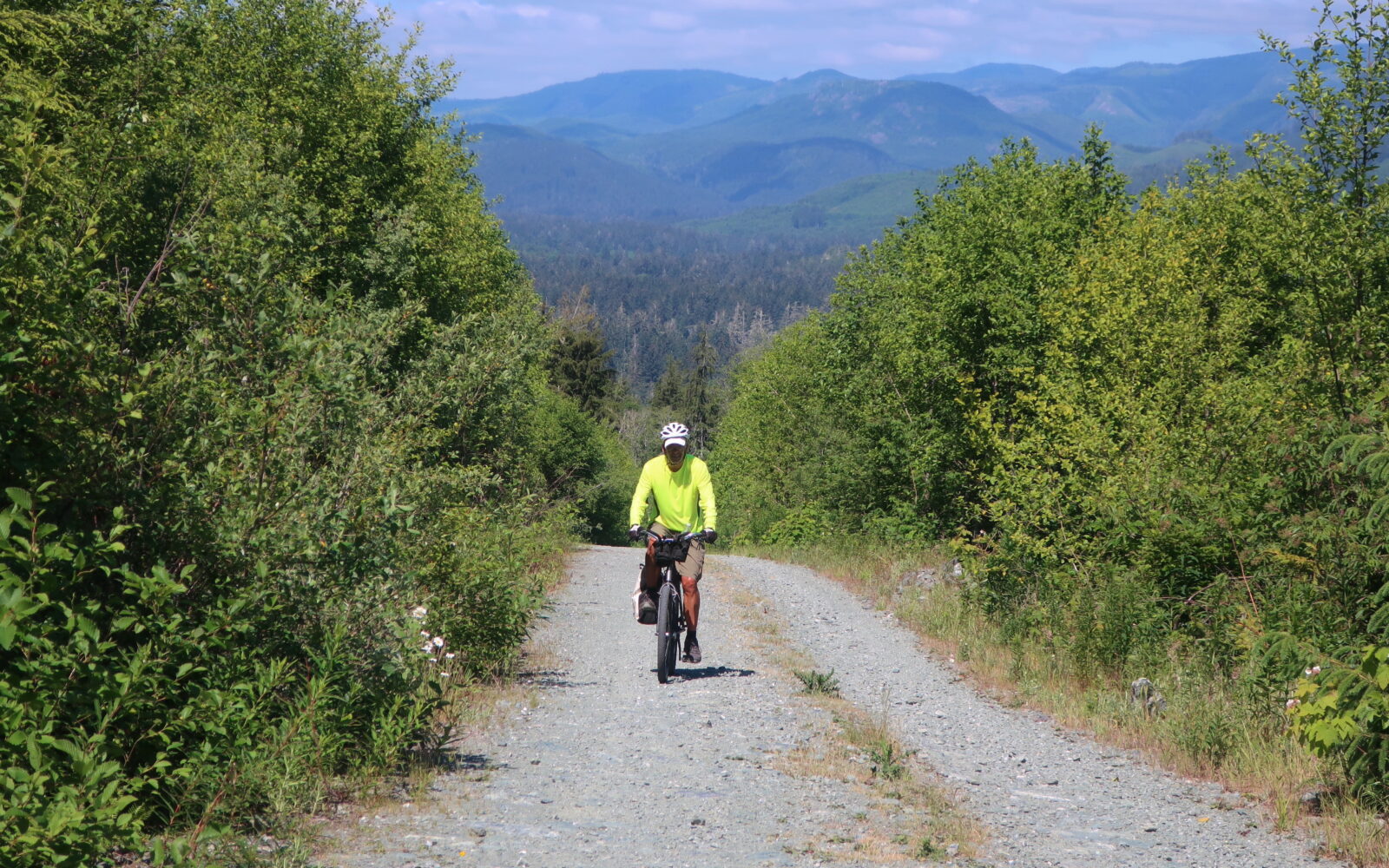
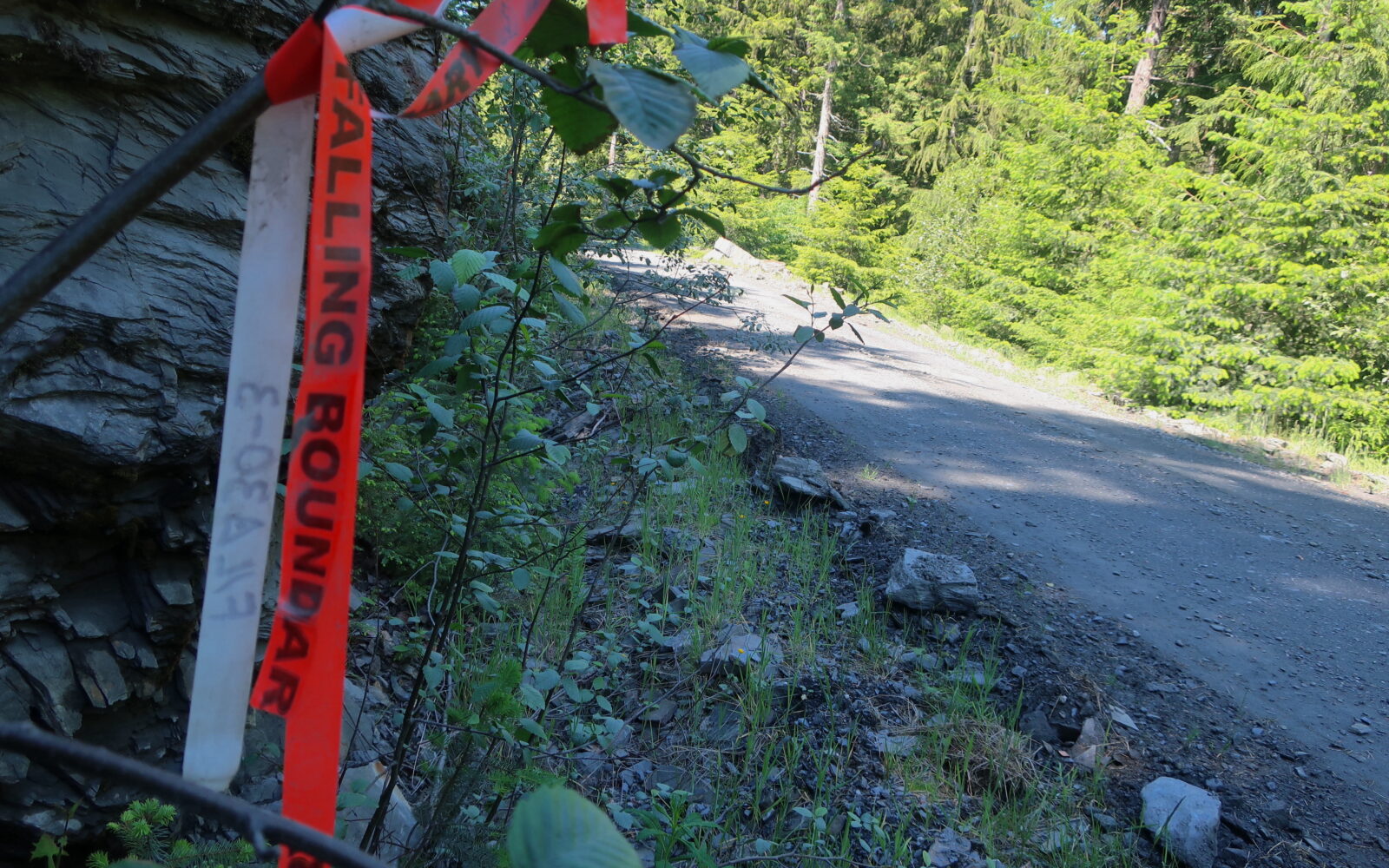
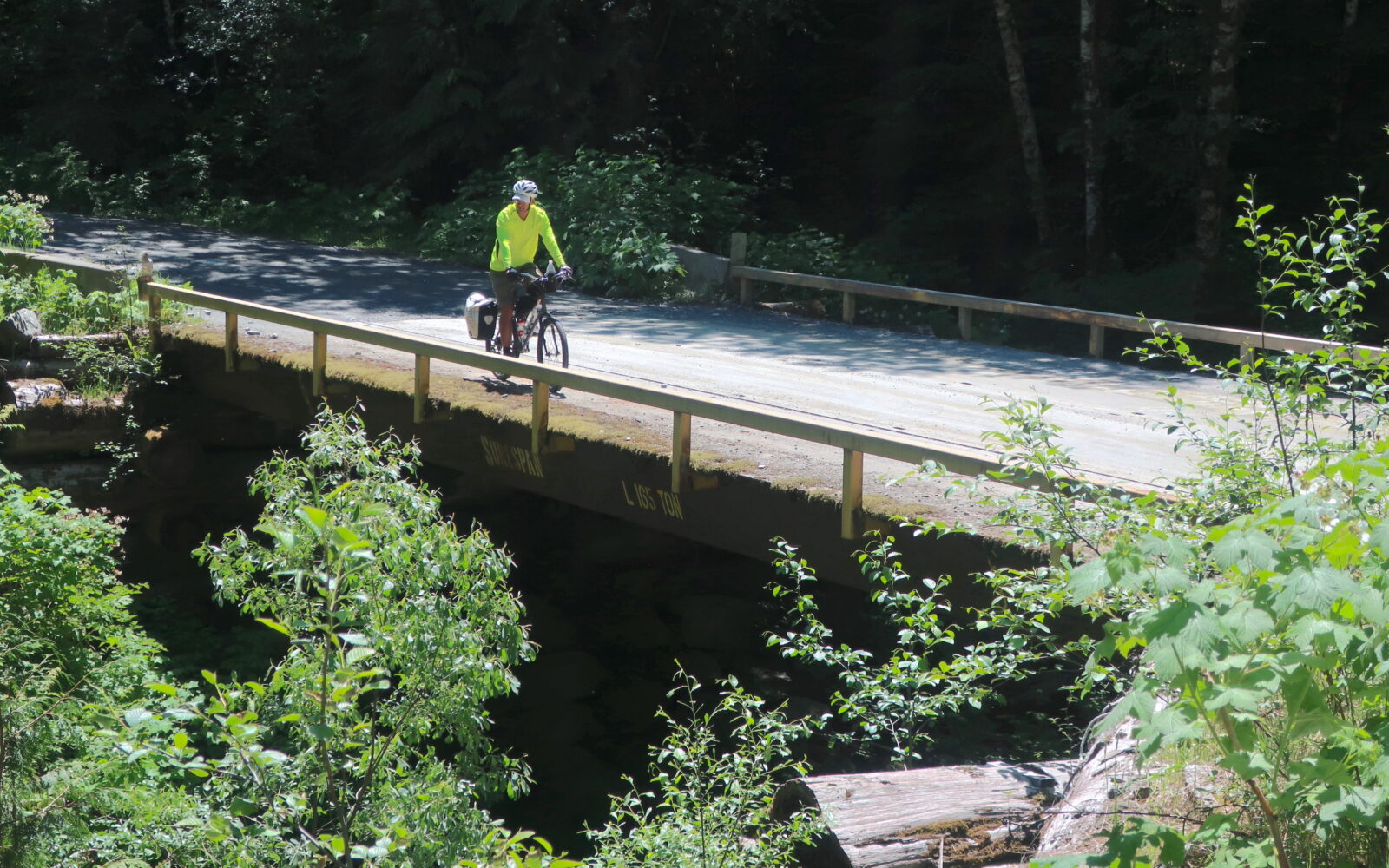
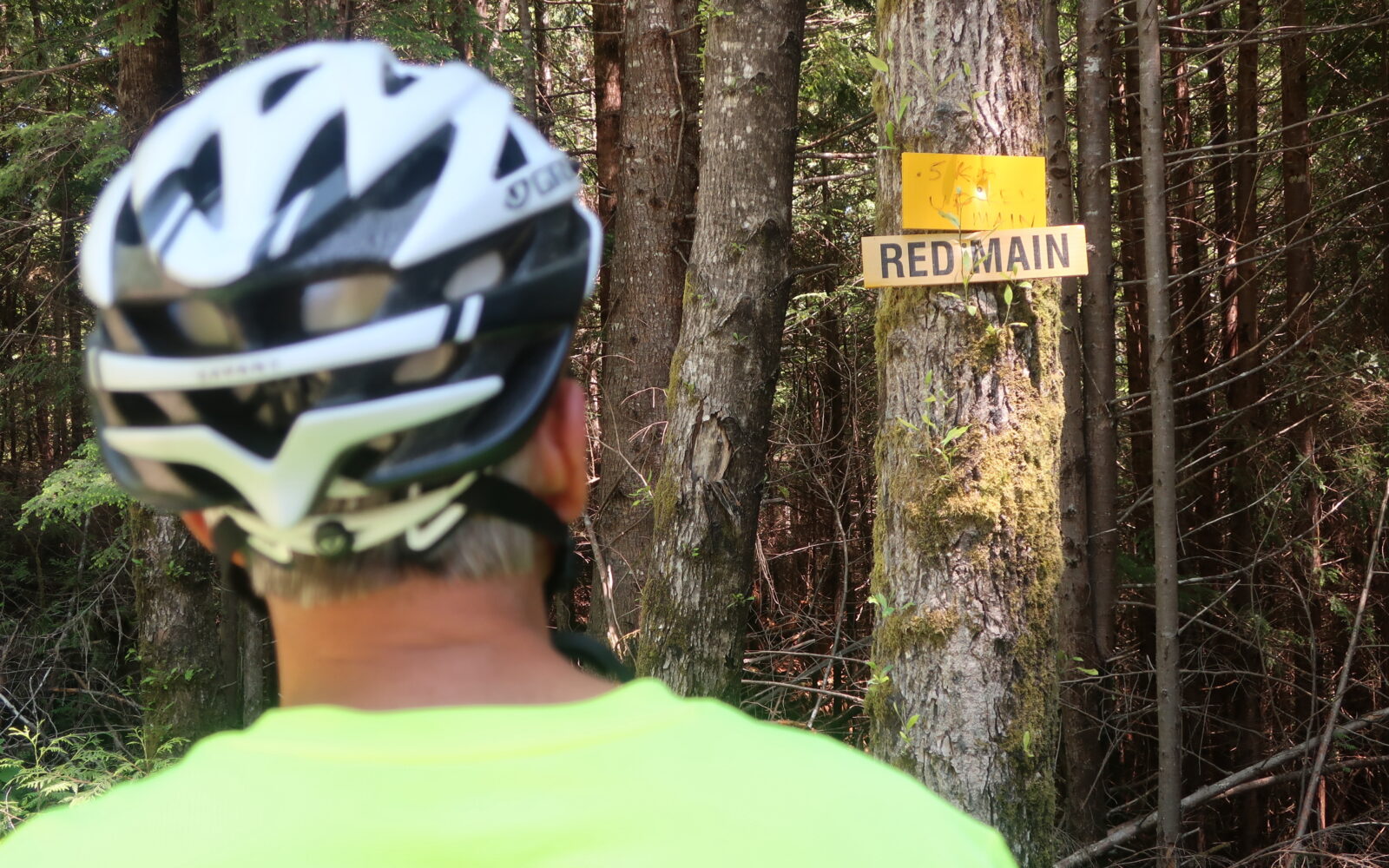



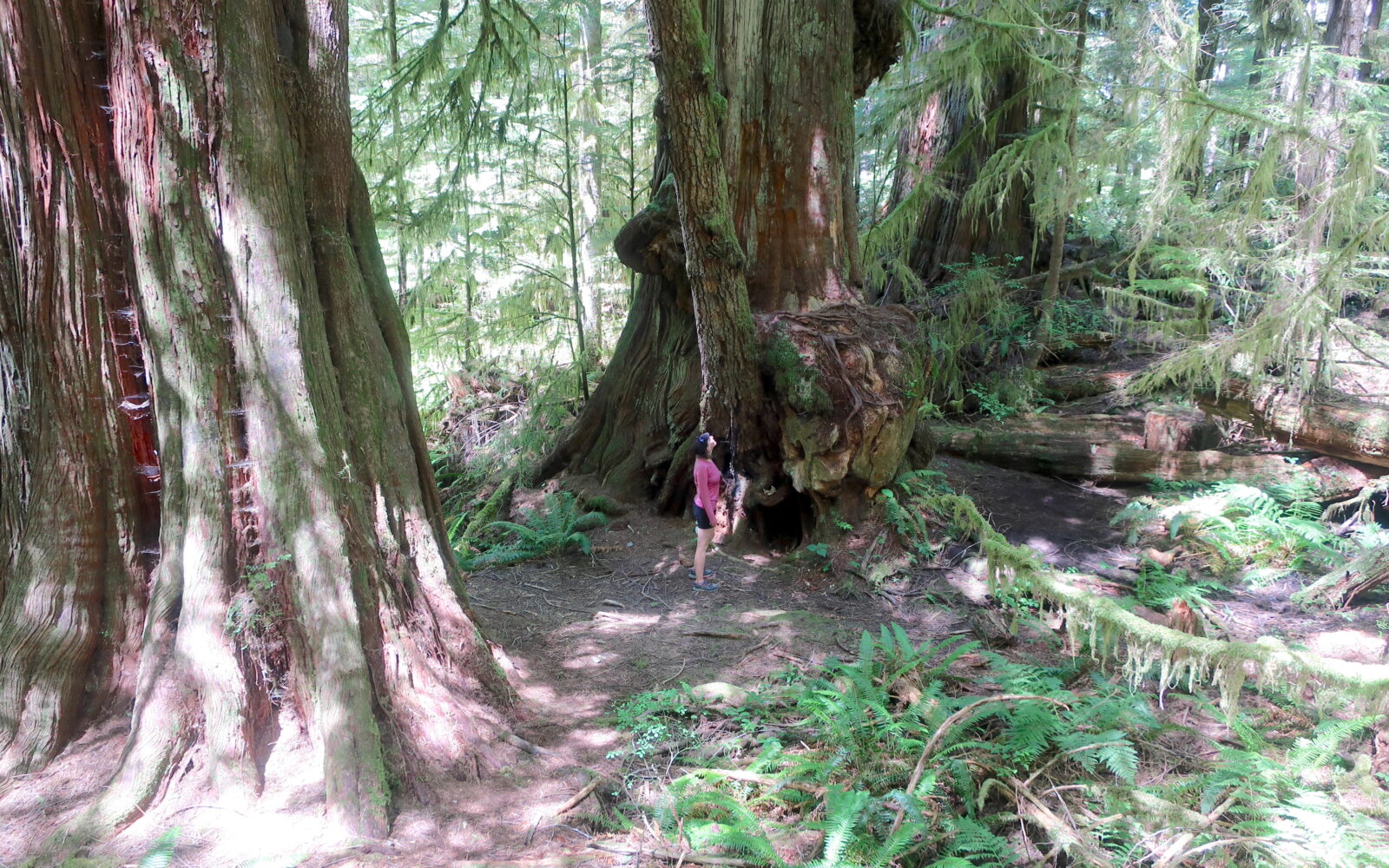
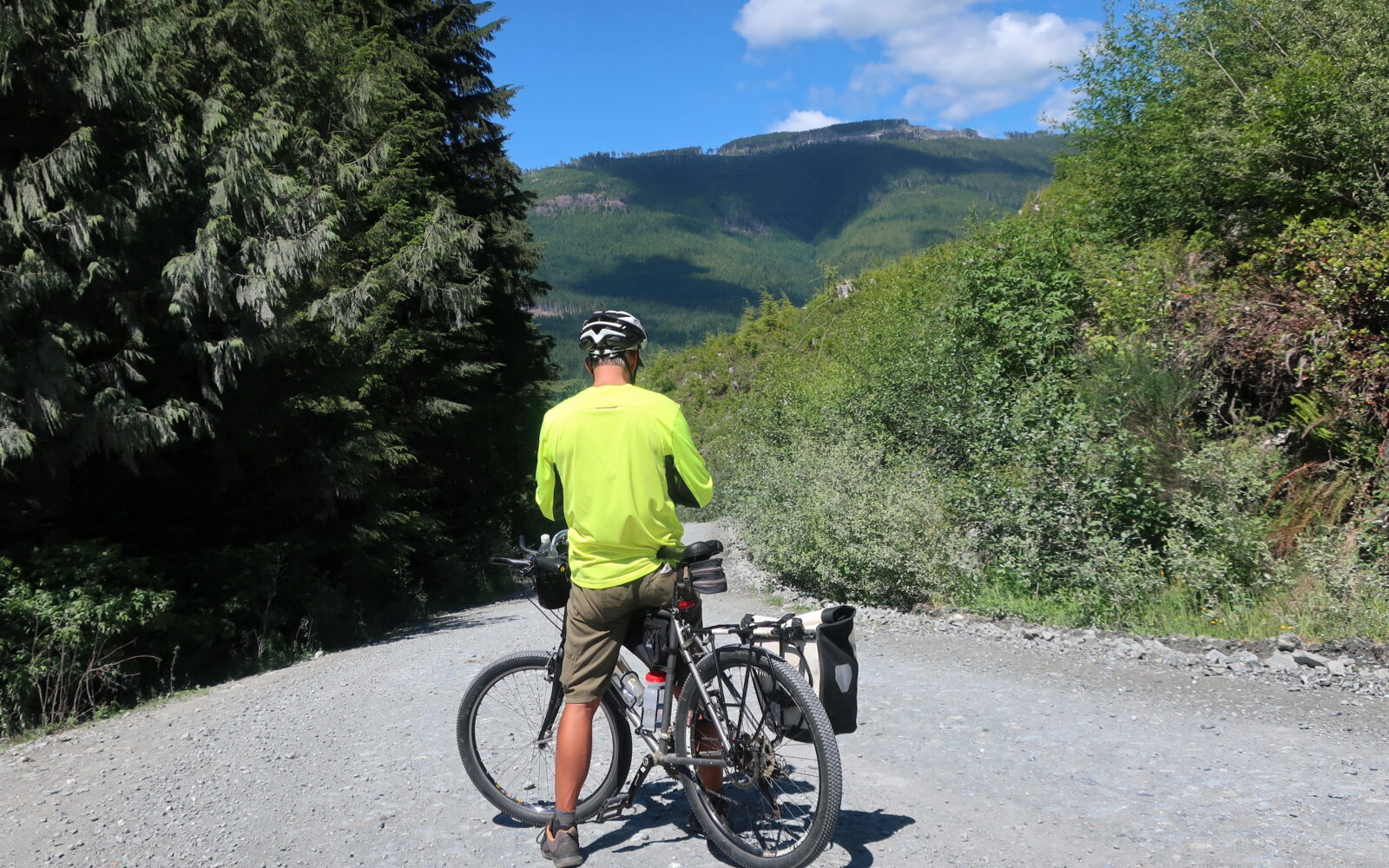

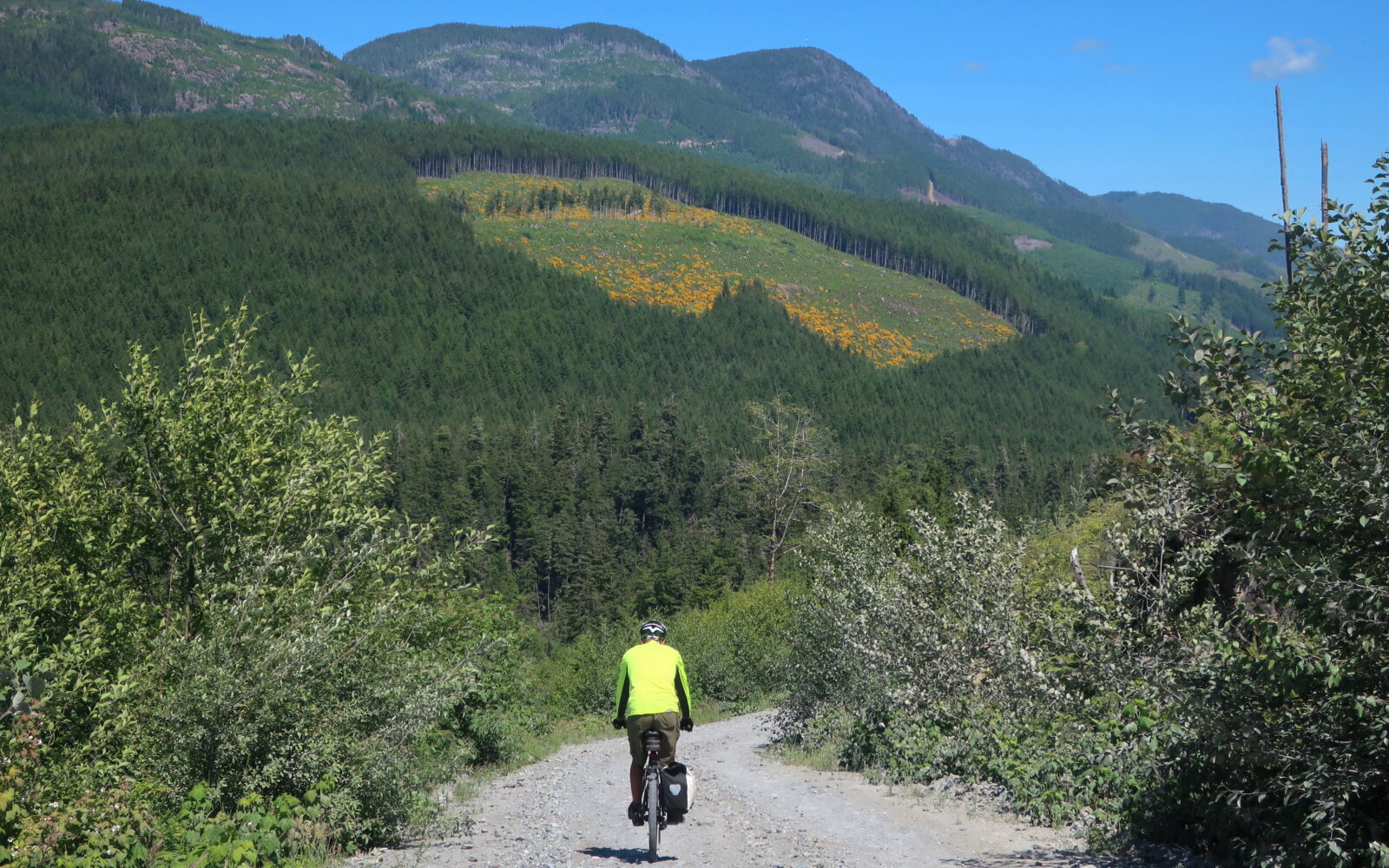
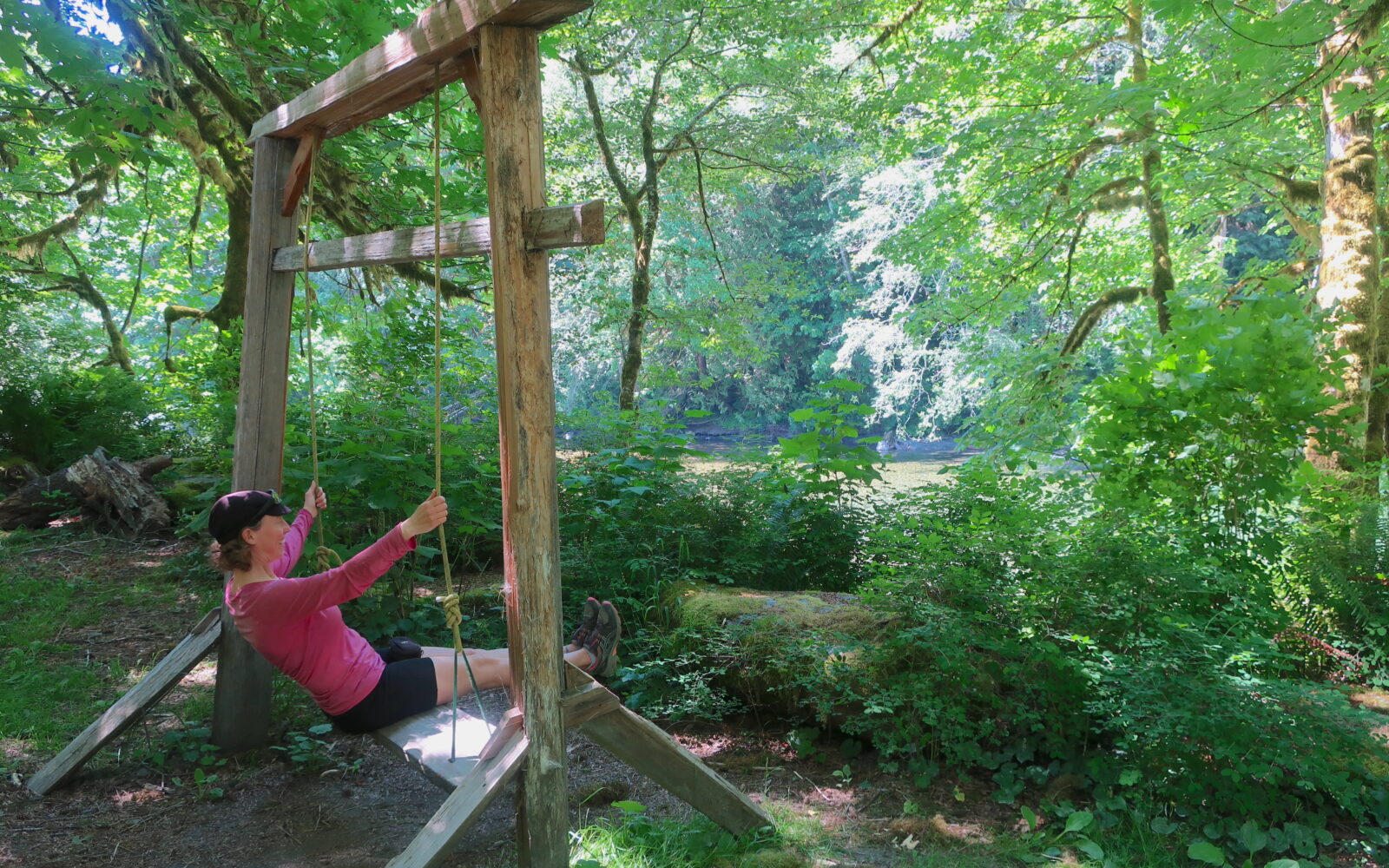
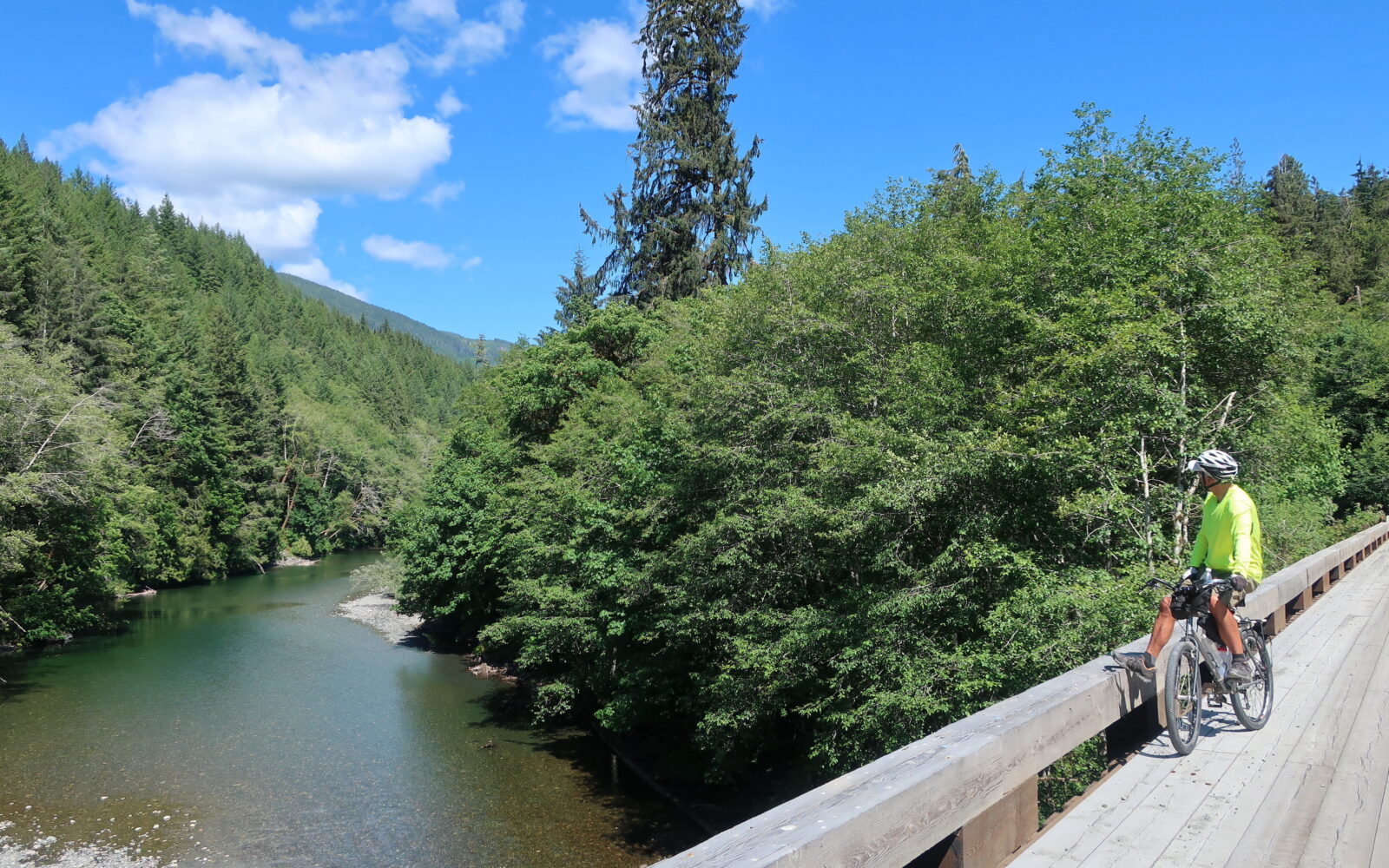

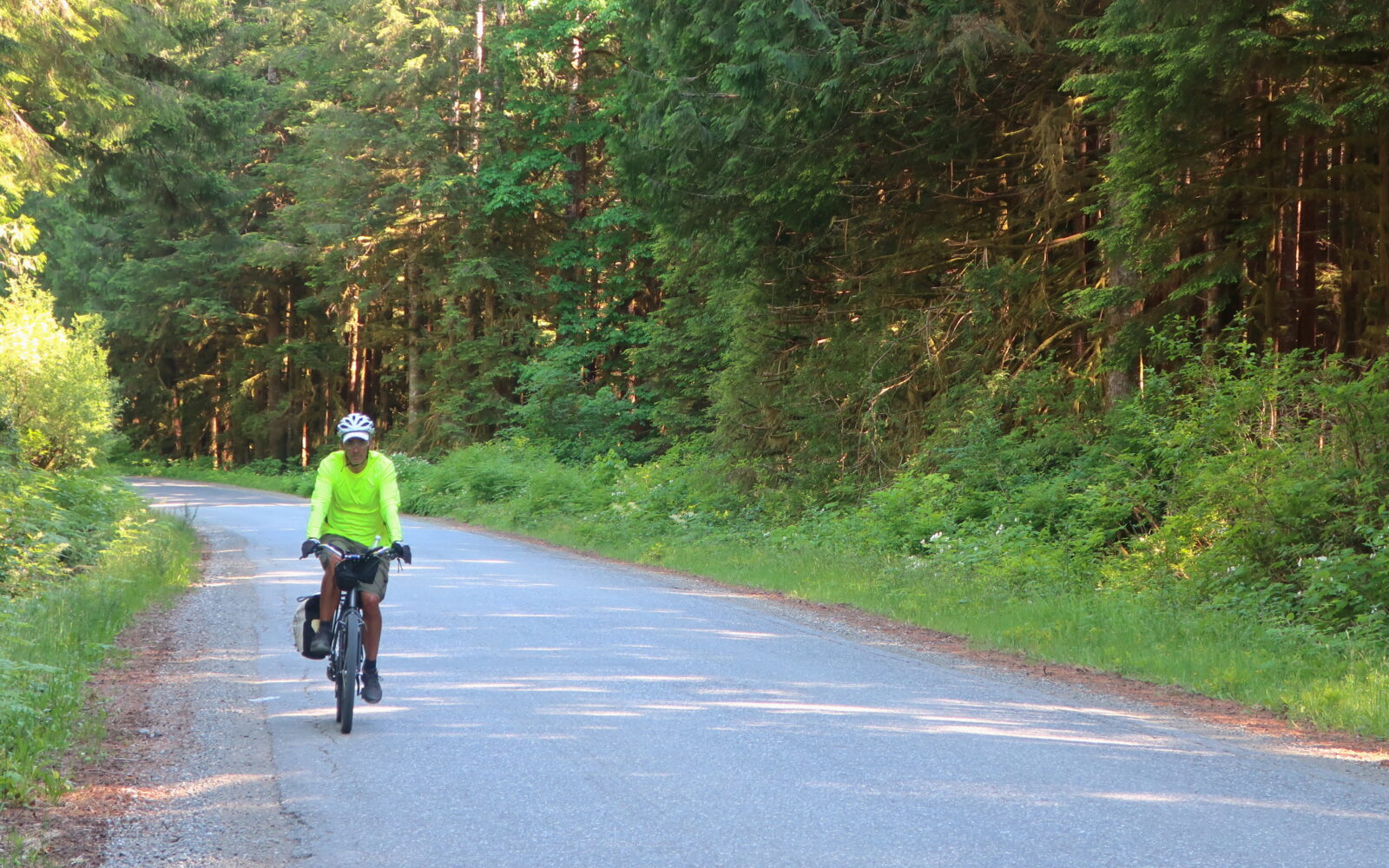

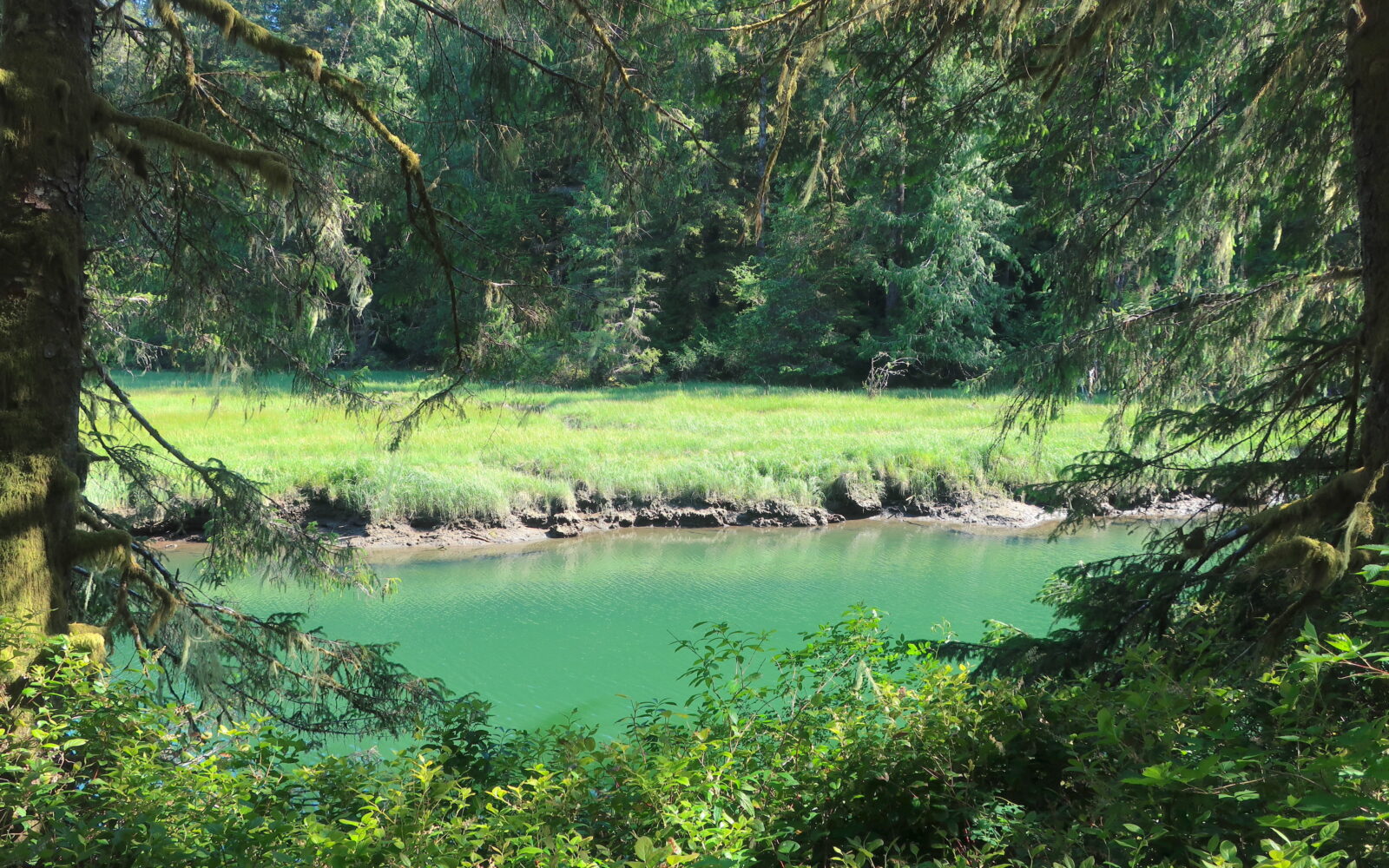

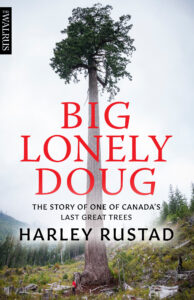 It’s one thing to see massive trees in an old-growth forest as you cycle along beautiful gravel roads. It’s another thing to understand the significance, history, and impact of the trees. This route is part of Dirty Freehub’s READ & RIDE program. READ to learn about the old-growth trees on southwest Vancouver Island. Then RIDE to meet the trees in-person. Click
It’s one thing to see massive trees in an old-growth forest as you cycle along beautiful gravel roads. It’s another thing to understand the significance, history, and impact of the trees. This route is part of Dirty Freehub’s READ & RIDE program. READ to learn about the old-growth trees on southwest Vancouver Island. Then RIDE to meet the trees in-person. Click 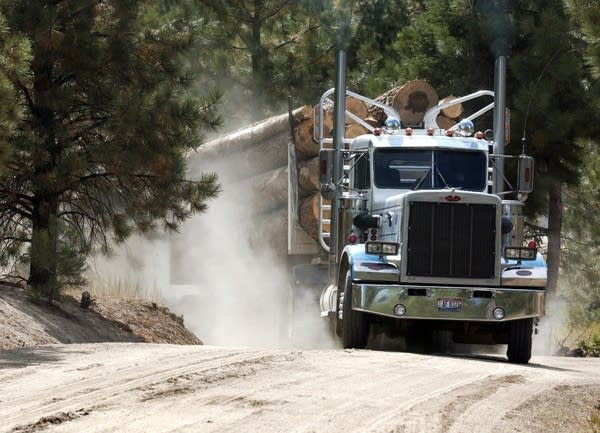
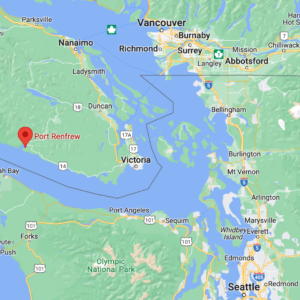
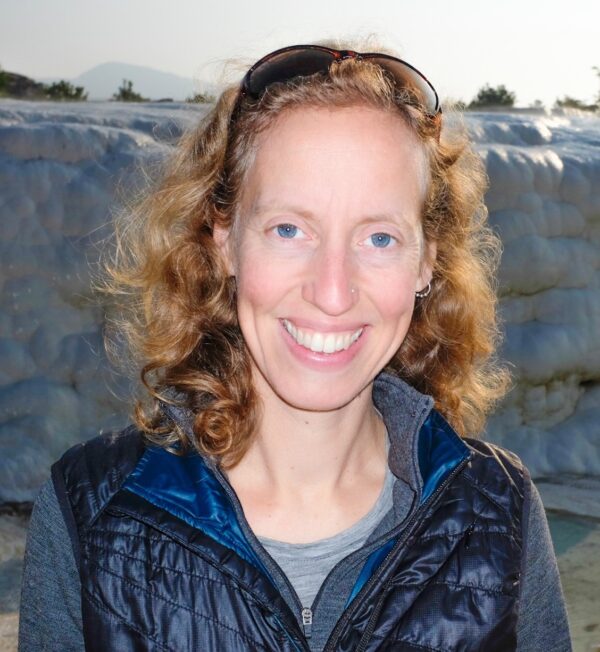
 Behind every route is scouting, mapping, storytelling, and a whole lot of pedal power.
Behind every route is scouting, mapping, storytelling, and a whole lot of pedal power.
Have you ridden this route? Got a question? Join the discussion!